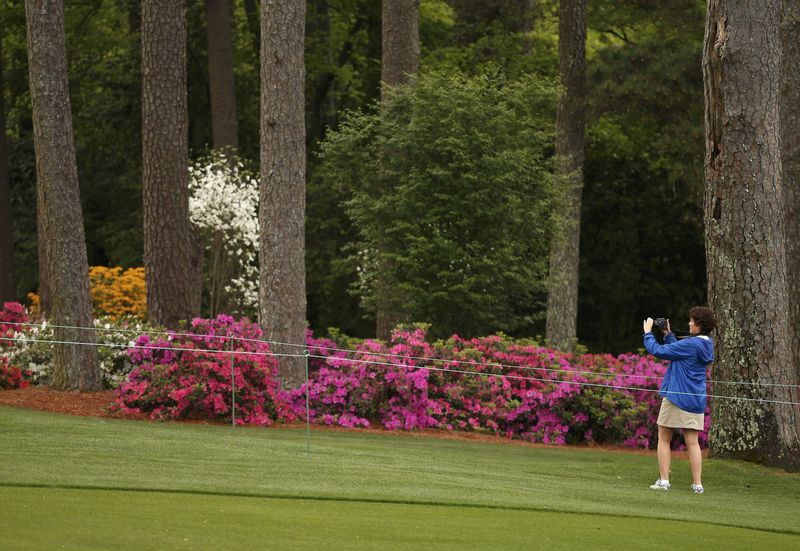By Larry Fine
AUGUSTA, Georgia (Reuters) - Golfers glide along as if walking on air and the crowd is polite and smiling at Augusta National Golf Club, where time stands still like a Norman Rockwell study of bygone days when the Masters rolls around.
The deep green grass is perfectly groomed and azaleas are in bloom when the first major championship of the year returns to the Georgia pines each April for a glorious reunion where more golf history will be made.
"The Masters is a monument to everything great in golf," Jack Nicklaus, winner of a record six Masters, said of the tournament co-founded by legendary Georgia golfer Bobby Jones.
Players are treated like royalty at the tournament founded in 1934 and where the focus is strictly on golf and tradition, while the memory of greats such as Sarazen, Hogan, Snead, Palmer, Nicklaus and Player and their exploits hang in the air.
Fans, or patrons as they are known at Augusta, lucky enough to have secured tickets, or held them through the decades or had them willed down to them, feel part of a civilized family outing staged on a grand scale.
The feeling is reinforced by throwback prices at concession stands, where a pimento cheese sandwich goes for $1.50, the ham and cheese, $2.50, a beer for $4 and chips or candy for $1.
Former CBS sports president Neal Pilson, who negotiated 19 of the one-year deals that has kept the Masters on the U.S. TV network from 1956 to the present day, calls it "the most unique event in American sports."
Green is the color of the Masters, from the paper cups for soft drinks and beer, to the plastic wrapping of the sandwiches, to the jackets worn by members of the exclusive club and draped over the shoulders of the latest champion.
Protecting the special atmosphere with a firm hand through an unobtrusive army of security, a long of list of do's and don'ts is enforced.
Cell phones, beepers and other electronic devices are prohibited and grounds for dismissal. Cameras are not allowed on tournament days, and patrons are asked not to run, lie down on the grass or go barefoot.
The graceful grounds of Augusta National are revealed to players after an elegant drive down Magnolia Lane from the hubbub of busy Washington Road.
"You step off Washington Road and you step away from modern America with its fast food, its strip malls and its pizza joints and parking lots and you go through the gate and go back 100 years," Pilson, now a sports business consultant, told Reuters.
"All of a sudden you're talking in hushed tones. There's not a blade of grass that isn't manicured. There's not a piece of paper anywhere. There's not a weed growing anywhere.
"The patrons are orderly, respectful. No one runs. No one yells."
First-time players pinch themselves to know they have really arrived at the U.S. cathedral of golf and the patrons feel privileged to be there.
Commercialism is held at bay by an exclusive membership intent on staging the world's greatest tournament.
Tradition and echoes of the past mark the run-up days from the annual Champions Dinner to the Par-3 Contest, a family fest for players on the eve of the championship where young children and grandchildren in caddie outfits toddle about on the greens.
As the only permanent site of a major, there is a familiarity with the holes, such as Amen Corner, and the high drama played out on them over the decades.
Even its timing kindles nostalgia.
"The Masters signifies to a good part of the country that spring has arrived," noted Pilson. "First week in April, it's still pretty chilly up north and in the Midwest and the flowers are out at Augusta and all's right with the world.
"It's kind of a fairyland. It's sports as it should be."

Said South African Gary Player, winner of three green jackets: "If there's a golf course in heaven, I hope it's like Augusta National."